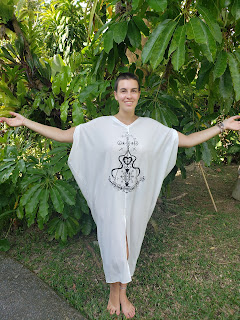Fashion That Incorporates Paper by Marcela De Vivo
The re-emergence of the paper dress is a trend 50 years in the
making. What started in the 1960’s as a way to promote products like Hallmark
paper plates, became a fashion fad that’s more akin to art. Paper dresses are
often considered pop art-- even the father of pop art, Andy Warhol, had his
hand in designing a few back in the 60’s.
Paper dresses are not always wearable, especially in the form
they take today. The hand-painted designs can’t always be mass produced because
of the material, therefore, if you are lucky enough to own a paper dress today,
it is likely to be one-of-a-kind.
Vintage Paper Dresses
For a little more than a dollar, a woman in the late 60’s could
order a disposable dress through the mail, or by walking down the colored
tissue paper aisle in the grocery store.
Companies, like Hallmark and Johnston’s Pies, used the
inexpensive dresses as the ultimate product promotion. Although they had a
short shelf life (they could only be worn a few times), the cheap price and
novelty of the sleeveless design made it a fashion craze. If you’re interested
in checking out these vintage paper dresses, the Museum at Fashion Institute of Technology
has a few from 1966-1968 in their permanent collection.
Tissues Paper Dresses
Tissue paper is the most delicate paper
material, therefore, the most challenging to create a wearable piece of fashion.
That makes it all the more impressive that the students of San Francisco’s
California College of Arts came together to create a collection of pink tissue paper dresses.
The creativity that fueled this educational expedition was only
assisted by a few materials, including tissue and tape. The collection of pink
gowns was displayed at the Exploratorium in San Francisco in 2010.
Origami
Origami is the Japanese art of paper craft. For centuries,
people all over the world have learned how to turn an ordinary square piece of
paper into hundreds of delicate designs, such as cranes, flowers, frogs, etc.
Jum Nakao, a
Japanese and Brazilian designer, figured out a way to bring origami to fashion.
By using vegetable paper, laces and laser cuts, Nakao was able to create
intricate designs. Unfortunately, after the 2004 runway show, the dresses
needed to be cut off the models. Now, these once-in-a-lifetime dresses live
only in photographs.
Tyvek
Design company, House-Wear,
figured out a way to use tyvek (the material that is used in mailing
envelopes) to create paper clothing for the modern woman. Unlike the other
paper dresses, these are designed specifically for wearability. You can throw a
tyvek paper wear in the washing machine without fear of destruction. Elements,
such as buttons and visible seams are drawn on, making the clothing cheaper to produce and easier to recycle.
 |
| Source: http://inhabitat.com/house-wear-tyvek-paper-wear-collection-paper-doll-play/ |
 |
| Source: http://inhabitat.com/house-wear-tyvek-paper-wear-collection-paper-doll-play/ |
 |
| Source: http://inhabitat.com/house-wear-tyvek-paper-wear-collection-paper-doll-play/ |
Maps
While these dresses aren’t wearable, map paper dresses have perhaps the most artistic thought behind
them. Designed by the French artist, Elizabeth Lecourt, the map-dress
collection is all folded by hand. Lecourt used maps she felt had a specific
look and charm, even though most of her chosen maps are inaccurate. The
collection of antique map dresses is called “Les robes geographiques.”
Using tissue paper, maps and newspaper for fashion has taken
“reduce, reuse and recycle” to an entirely different level.
Marcela De Vivo
is a freelance writer in California whose writing specializes in health,
beauty, tech and marketing. When it comes to fashion, she likes to explore all
of her options. Follow her on Facebook and Twitter
today!




Comments